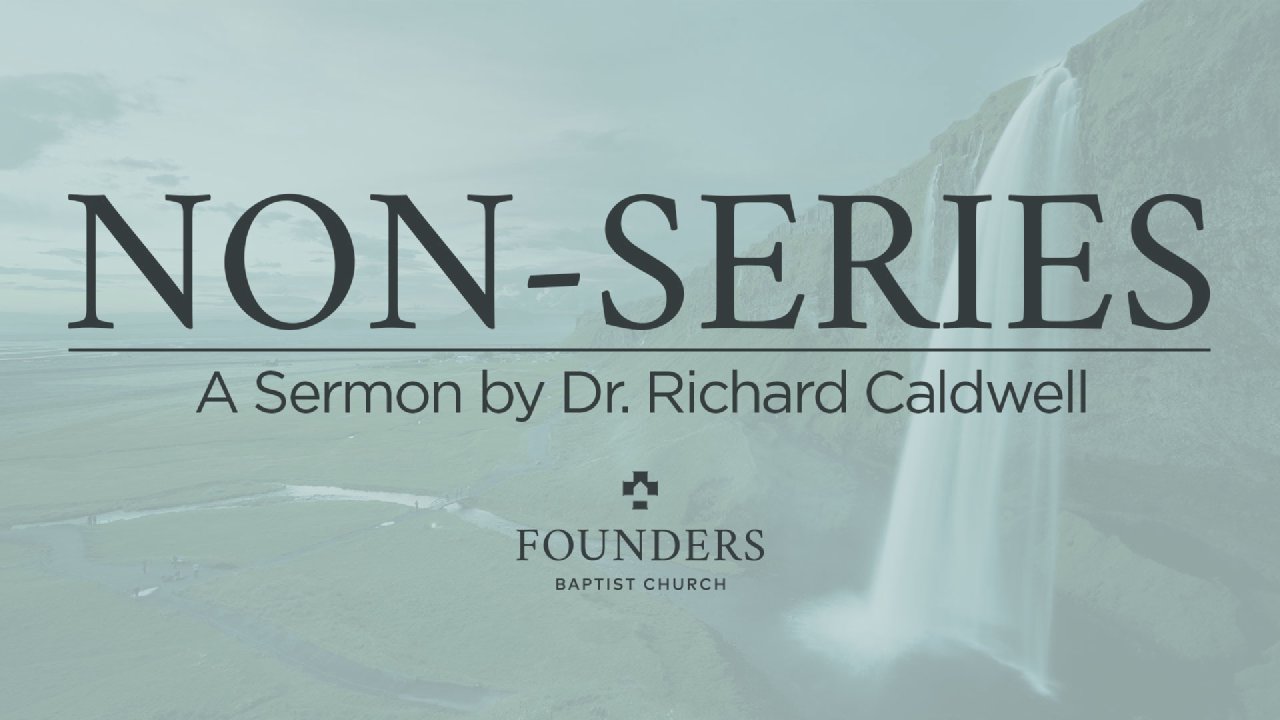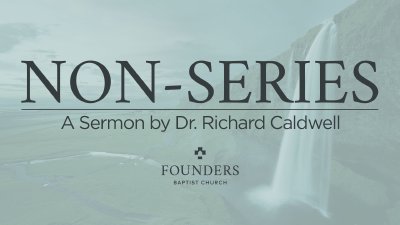Introduction:
The unity of the local church is an experiential manifestation of the unity that belongs to salvation.
IT IS A UNITY THAT IS OBJECTIVE, SETTLED, AND SHARED BY EVERYONE WHO HAS BEEN SAVED.
Where the Spirit of God has done His regenerating work in a person’s life, where the new birth has occurred, where the Spirit of God has taken up residence in a life (thus, it is called the unity of the Spirit) THAT PERSON NOW SHARES IN THE UNITY OUR VERSES DESCRIBE.
WE DON’T CREATE THE UNITY THAT WE EXPERIENCE IN THE CHURCH. WE MAINTAIN IT. WE LIVE IT OUT. WE LIVE IN ACCORDANCE WITH IT. We live in a way that treasures that unity and makes the choices that allow for it not to be disrupted.
AND EVERYONE WHO TRULY BELONGS TO THAT UNITY HAS THE CAPACITY (by the Spirit) TO LIVE IN A WAY THAT AGREES WITH IT.
AS WE HAVE SEEN, THE MAINTAINING OF THAT UNITY REQUIRES SOMETHING LARGER THAN THE UNITY ITSELF.
(1) The ambition necessary for local church unity — to live my life in a way that is worthy of the calling we received in Christ.
(2) The attitudes necessary for local church unity — humility, gentleness, and patience.
(3) The actions necessary for local church unity — forbearance in the face of what would disrupt that unity and the zealous guarding of what maintains that unity.
Now we come to the AWARENESS necessary for local church unity.
THIS IS SOMETHING THAT WE WILL SEE AGAIN AND AGAIN IN THE NEW TESTAMENT.
Christian living requires KNOWLEDGE.
Action is based on FACT.
Practice is based on THEOLOGICAL TRUTH.
Duty finds its reason and its fuel in DOCTRINE.
So that after talking about the sphere in which this unity is pursued and maintained, Paul describes that sphere. He describes what belongs to the BOND OF PEACE.
FIRST NOTE: The peace that Paul has been discussing, up to chapter four, is the glorious unity between Jew and Gentile that exists in the church.
Ephesians 2:11–22 (LSB)
11 Therefore, remember that formerly you—the Gentiles in the flesh, who are called “Uncircumcision” by the so-called “Circumcision,” which is performed in the flesh by human hands— 12 remember that you were at that time without Christ, alienated from the citizenship of Israel, and strangers to the covenants of promise, having no hope and without God in the world. 13 But now in Christ Jesus you who formerly were far off have been brought near by the blood of Christ. 14 For He Himself is our peace, who made both groups one and broke down the dividing wall of the partition 15 by abolishing in His flesh the enmity, the Law of commandments contained in ordinances, so that in Himself He might create the two into one new man, making peace, 16 and might reconcile them both in one body to God through the cross, having in Himself put to death the enmity. 17 AND HE CAME AND PREACHED THE GOOD NEWS OF PEACE TO YOU WHO WERE FAR AWAY, AND PEACE TO THOSE WHO WERE NEAR; 18 for through Him we both have our access in one Spirit to the Father. 19 So then you are no longer strangers and sojourners, but you are fellow citizens with the saints, and are of God’s household, 20 having been built on the foundation of the apostles and prophets, Christ Jesus Himself being the corner stone, 21 in whom the whole building, being joined together, is growing into a holy sanctuary in the Lord, 22 in whom you also are being built together into a dwelling of God in the Spirit.
So, in what ways do Jews and Gentiles now find themselves as one new man in Jesus Christ?
What is this unity that they share that they are to strive to visibly and truly demonstrate?
This is why he launches DIRECTLY into his descriptions. He doesn’t even provide a conjunction.
What is this “bond of peace” that has been produced by the Spirit of God? In WHAT WAY ARE WE ALL HELD TOGETHER?
He gives us SEVEN WAYS that we unified in Jesus Christ.
And as we remain AWARE OF THESE THINGS and RESPOND RIGHTLY TO THIS KNOWLEDGE, we have theological and doctrinal fuel for the maintaining of local church unity.
SECOND NOTE: This is clearly organized in a Trinitarian acknowledgment. Verse 4 speaking of the Holy Spirit, verse 5 speaking of the Son of God, and verse 6 speaking of God the Father. What this emphasizes, of course, is that our unity is found in God has related us to Himself, and that the chief motivation for practically expressing that unity is God Himself — living in accordance with the will of the Spirit, the Son, and the Father.
WHATEVER ELSE IS IN THIS LIST IS TO BE RELATED TO OUR GRACIOUS RELATIONSHIP WITH OUR GOD.
To not treasure unity and to disregard it in ways that sinfully fuel divisions, is to act contrary to the Godhead.
Francis Foulkes — “The apostle is aware of the endless variety of temperaments amongst his readers and the diverse racial and social backgrounds from which they have come into the Christian church; but he would have them even more aware of the spiritual realities that now unite them and that should completely transcend differences of background. Already, in 1:13–14, he has spoken of the spiritual blessings that are now shared between Jews and Gentiles, and in 2:11–22 of the barriers between them that have been broken down in Christ. All, he says, now have equal shares in the privileges of grace (3:6)… he names what they have in common, a unity by the Spirit in the church, a unity in Christ acknowledged and confessed as Lord, a unity ultimately in God the Father and source of all. As Caird puts it, ‘The corporate unity of the church is not a desirable end, but a datum to which the behaviour of its members must conform.’”[1]
[1]Francis Foulkes, Ephesians: An Introduction and Commentary, vol. 10 of Tyndale New Testament Commentaries. IVP/Accordance electronic ed. (Downers Grove: InterVarsity Press, 1989), 117-118.





